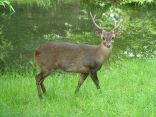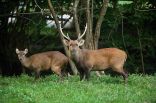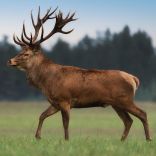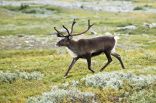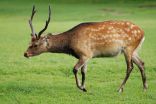- Marsupials (Diprotodontia)
- Carnivorous marsupials (Dasyuromorphia)
- Tenrec (Afrosoricida)
- Elephant shrew (Macroscelidea)
- Elephant (Proboscidea)
- Sea cows (Sirenia)
- Armadillos (Cingulata)
- Edentata (Pilosa)
- Treeshrew (Scandentia)
- Primate (Primates)
- Rodent (Rodentia)
- Bats (Chiroptera)
- Even-toed ungulate (Artiodactyla)
- Odd-toed ungulate (Perissodactyla)
- Carnivores (Carnivora)
Cervidae
Deer or true deer are hoofed ruminant mammals forming the family Cervidae. The two main groups of deer are the Cervinae, including the muntjac, the elk (wapiti), the red deer, and the fallow deer; and the Capreolinae, including the reindeer (caribou), white-tailed deer, the roe deer, and the moose. Male deer of all species (except the water deer) as well as female reindeer, grow and shed new antlers each year. In this they differ from permanently horned antelope, which are part of a different family (Bovidae) within the same order of even-toed ungulates (Artiodactyla).
Deer appear in art from Paleolithic cave paintings onwards, and they have played a role in mythology, religion, and literature throughout history, as well as in heraldry, such as red deer that appear in the coat of arms of Åland. Their economic importance includes the use of their meat as venison, their skins as soft, strong buckskin, and their antlers as handles for knives. Deer hunting has been a popular activity since the Middle Ages and remains a resource for many families today.
Deer appear in art from Paleolithic cave paintings onwards, and they have played a role in mythology, religion, and literature throughout history, as well as in heraldry, such as red deer that appear in the coat of arms of Åland. Their economic importance includes the use of their meat as venison, their skins as soft, strong buckskin, and their antlers as handles for knives. Deer hunting has been a popular activity since the Middle Ages and remains a resource for many families today.
woaqzo@yahoo.com
